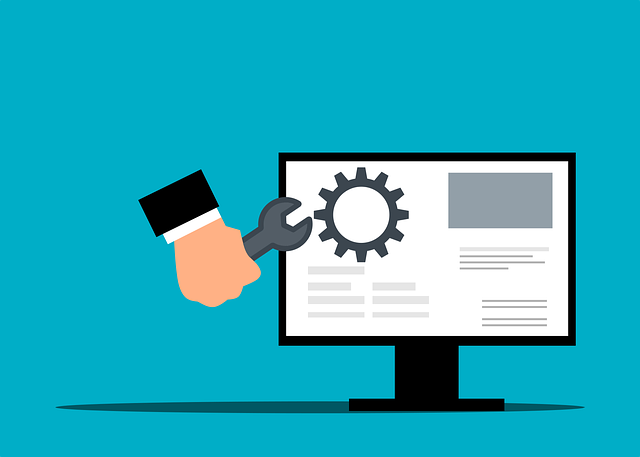Introduction to NLP in Chatbots
NLP in Chatbots: A detailed look at how NLP is used in chatbots, including the different types of chatbots, the challenges involved, and the benefits.
NLP stands for Natural Language Processing. It’s a branch of artificial intelligence that deals with analyzing, understanding, and generating human language. Chatbots are one type of application that uses NLP.
Chatbots are computer programs that simulate human conversation. They’re commonly used to provide customer service or other support. Many chatbots use some form of NLP to understand what people are saying to them. This allows them to respond in a more natural way.
There are different types of chatbots. Some use rule-based systems while others use machine learning algorithms. Each has its own strengths and weaknesses. Rule-based chatbots are often more limited in their capabilities but can be easier to create and maintain. Machine learning chatbots can be more complex but can offer a more realistic conversational experience.
The challenge with NLP in chatbots is getting them to understand human language in all its forms and context. This can be difficult because language is constantly changing and evolving. Another challenge is dealing with the vast amount of data that’s needed to train a machine learning model. This data can be hard to come by or may not be representative of real-world conversations.
Despite these challenges, there are many benefits to using NLP in chatbots. Chatbots can help businesses save time
Types of Chatbots: From Rule-based to Self-learning
There are two main types of chatbots: rule-based and self-learning.Rule-based chatbots rely on a set of pre-determined rules to respond to user input. This can be simple, like matching keywords to predetermined responses, or more complex, like providing answers to questions based on a set of rules. The advantage of this approach is that it is relatively easy to create and deploy a rule-based chatbot. However, the downside is that these chatbots can often appear very robotic and lack the natural language understanding (NLU) that is necessary for truly engaging conversations.
Self-learning chatbots use artificial intelligence (AI) techniques to learn from past conversations in order to improve their future performance. This approach requires more development effort upfront, but results in a chatbot that feels more natural and humanlike in its conversation. Additionally, self-learning chatbots can continue to get smarter over time as they learn from more data.
The Role of NLP in Chatbot Interaction
NLP in chatbots can be used for a variety of tasks, including: understanding and responding to user input, providing helpful information, and managing conversations.
There are different types of chatbots, each with its own strengths and weaknesses. The most common type of chatbot is the rule-based chatbot, which uses a set of rules to determine how to respond to user input. However, these chatbots can often be limited in their ability to understand natural language and can sometimes give unexpected or incorrect responses.
Statistical chatbots are another type of chatbot that uses statistical methods to generate responses. These chatbots often have a better understanding of natural language but can be more difficult to train and can take longer to generate responses.
The challenges involved in using NLP in chatbots include: dealing with ambiguity, understanding context, and generating appropriate responses. These challenges can be overcome by using sophisticated NLP techniques such as: word sense disambiguation, part-of-speech tagging, and named entity recognition.
The benefits of using NLP in chatbots include: improved usability, increased accuracy, and the ability to handle more complex tasks.
Challenges in Building NLP-powered Chatbots
Building NLP-powered chatbots can be challenging for a number of reasons. First, NLP technology is still in its early stages of development and requires significant training and tuning to work effectively. Second, chatbots need to be able to handle a wide range of topics and contexts, which can be difficult for NLP models. Finally, chatbots must be able to handle different user inputs (e.g., free-form text, structured data) and understand the user’s intent. Despite these challenges, NLP-powered chatbots offer a number of benefits over traditional rule-based chatbots, including increased accuracy, flexibility, and scalability.
Thus, developers must carefully consider the challenges of building NLP-powered chatbots before taking on such a project. When done right, however, it can be an extremely rewarding and profitable endeavor.
Natural Language Understanding and Generation in Chatbots
Natural language understanding (NLU) and generation (NLG) are two key components of chatbots. NLU is responsible for extracting meaning from user input, while NLG is responsible for generating responses based on that meaning.
There are several different types of chatbots, each with its own strengths and weaknesses. The most popular type of chatbot is the rule-based chatbot, which relies on a set of pre-defined rules to generate responses. However, these chatbots can often be brittle and fail to handle unexpected inputs gracefully.
Statistical chatbots are another popular type of chatbot. These chatbots use statistical models to generate responses, and can often be more robust than rule-based chatbots. However, they can also be more difficult to train and tune.
The challenges involved in building chatbots include dealing with noisy or unstructured data, understanding the context of conversations, and generating natural-sounding responses. Benefits of using chatbots include increased customer engagement and satisfaction, as well as greater efficiency in customer support.
Using NLP for Intent Recognition and Dialogue Management
Intent recognition and dialogue management are two of the most important aspects of natural language processing (NLP). Intent recognition is the process of identifying the purpose or goal of an utterance, while dialogue management is the process of managing a conversation between two or more parties.
There are a variety of chatbots that use NLP for intent recognition and dialogue management. Some chatbots are designed for general purpose conversations, while others are designed for specific domains such as customer service or online shopping. The different types of chatbots can be classified based on their functionality, platform, or application.
General purpose chatbots typically use rule-based systems or finite state machines to interpret user utterances and generate responses. These chatbots can be further customized with natural language understanding (NLU) models to improve their accuracy in understanding user intents. However, NLU models require a large amount of training data and can be expensive to develop.
Specific domain chatbots usually have predefined intents and responses and do not require NLU models. They can be deployed on a variety of platforms, including web-based chat platforms, messaging apps, and voice assistants. These chatbots are often used in customer service applications to automate simple tasks such as booking appointments or answering Frequently Asked Questions (FAQs).
The challenges involved in developing NLP-powered chatbots include choosing the right approach for the specific application, acquiring high-quality training data, and dealing with noise in user utterances
Benefits of NLP in Chatbots: Improved User Experience and Automation
NLP in chatbots can improve user experience by providing a more natural way to interact with the chatbot. NLP can also help automate the chatbot interaction, making it more efficient and easier to use.
Some of the benefits of using NLP in chatbots include:
Improved user experience: NLP provides a more natural way to interact with the chatbot, making it more user-friendly. The use of NLP can also help the chatbot understand the user’s intent, allowing for a more personalized interaction.
Automation: NLP can help automate the chatbot interaction, making it more efficient and easier to use. This can free up time for other tasks, such as customer service or sales.
Scalability: The use of NLP can help scale the chatbot interaction, allowing for more users to be interacted with in a shorter amount of time. This is especially beneficial for businesses that have a large customer base.
There are many other benefits of using NLP in chatbots as well, such as increased accuracy and improved data quality. However, these are just some of the most notable benefits that businesses can expect when they implement an NLP-based chatbot into their customer service strategy.
Real-world Applications of NLP in Chatbots
There are many different types of chatbots, each with their own strengths and weaknesses. Some chatbots are designed for customer service, others for sales, and still others for entertainment. No matter what type of chatbot you’re working with, though, natural language processing (NLP) is likely to be a key component.
NLP is what allows a chatbot to understand the user’sinput and respond in a meaningful way. Without NLP, a chatbot would be nothing more than a simple search engine. The challenges involved in using NLP for chatbots include understanding the user’s intent, determining the appropriate response, and dealing with ambiguity.
The benefits of using NLP in chatbots include improved customer satisfaction and increased sales. NLP can also help you gather valuable data about your customers’ preferences and needs.
Conclusion: The Future of NLP in Chatbot Technology
NLP in chatbots is still in its early stages, but the future looks promising. Chatbots are becoming more and more popular, and with the advances in NLP, they are only going to get better. There are many different types of chatbots, each with their own strengths and weaknesses. The challenges involved in NLP are difficult, but not impossible. The benefits of NLP in chatbots are numerous, and as the technology improves, so too will the chatbots.







